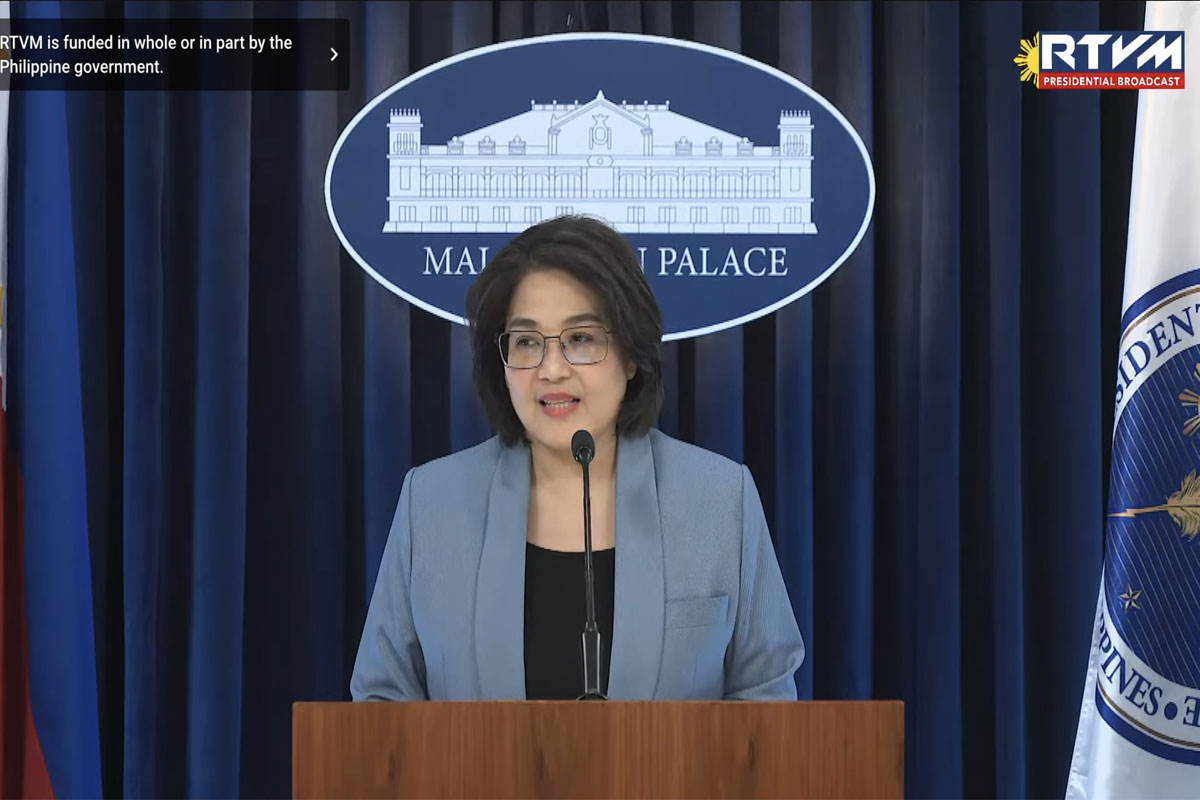
Gov’t to tax junk food and sugary sweetened beverages to address lifestyle diseases
 THE idea to place a “sin tax” on sugar-saturated drinks, such as soda, to combat ballooning obesity rates really took off in the 2010s.
THE idea to place a “sin tax” on sugar-saturated drinks, such as soda, to combat ballooning obesity rates really took off in the 2010s.
European countries such as Finland and France placed taxes on the purchase of sugar-sweetened beverages, or SSBs, early in the decade. And in 2014, the city of Berkeley, California, became the first U.S. locality to levy a tax on SSBs. Six U.S. cities and dozens of jurisdictions around the world followed suit. The theory behind such taxation is that higher prices will reduce consumption and yield health improvements given well-established links between SSBs and obesity, which has been found to contribute to weight gain, Type 2 diabetes, heart disease, kidney diseases, non-alcoholic liver disease, tooth decay and gout.
The Marcos administration is planning to tax junk food and increase the taxes on sweetened drinks to address health issues especially among Filipino children and at the same time generate revenues for the government.
In January 2018, the Philippines began imposing a tax of 6 Philippine pesos per litre (around 13%) on sugary sweetened beverages ( SSB ) to curb the obesity burden. Taxing SSB is a health measure aimed at influencing consumers to improve their beverage consumption patterns in order to achieve better health outcomes. The proposed excise tax will make SSBs more expensive, thus reducing consumption and encouraging the consumers to shift their purchases to healthier options.
Finance Secretary Benjamin Diokno said the Department of Finance and the Department of Health (DOH) are jointly pushing higher taxes as proactive health and revenue measure to curb diabetes, obesity , and noncommunicable diseases related to unhealthy diet.
Research analysis suggests several important conclusions :
Soda taxes help decrease consumption;
They are not as regressive as feared; and
Sin taxes effect of soda taxes on such health concerns as diabetes and high blood pressure are overwhelming
Obesity is particularly prevalent in the Philippines, where 36.6 percent of individuals aged 20 years or older meet the World Health Organization (WHO) body mass index or BMI cutoff points for being overweight or obese.
The fundamental cause of obesity and overweight is an energy imbalance between calories consumed and calories expended —too much drinking and eating but not enough physical activity.
Excess weight, especially obesity, diminishes almost every aspect of health, from reproductive and respiratory function to memory and mood. Obesity increases the risk of several debilitating, and deadly diseases, including diabetes, heart disease, and some cancers.
Around 27 million Filipinos are overweight and obese, based on the latest survey of the Department of Science and Technology’s Food and Nutrition Research Institute. For the past two decades, overweight and obesity among adults has almost doubled from 20.2% in 1998 to 36.6% in 2019. Similarly, the prevalence rates of overweight and obesity among adolescents have more than doubled from 4.9% in 2003 to 11.6% in 2018.
In 2021, about nine percent of assessed adults aged 20 and above in the Philippines were identified as obese or overweight. The highest share of obese or overweight adults was reported among adults in the National Capital Region (NCR) at 36 percent.
Senator Cynthia Villar has sought the immediate passage of a measure to address the alarming rates of obesity in the country. According to Villar, her Senate Bill No. 2230, or the Anti-Obesity Act of 2023, “aims to establish a comprehensive nationwide anti-obesity campaign to control and prevent obesity among Filipinos.
Unhealthy diet
The top four causes of death in the country from January to December of 2022 were ischemic heart diseases, neoplasms, cerebrovascular diseases and diabetes mellitus.
As stressed by the Harvard School of Public Health, excess weight, especially obesity, diminishes almost every aspect of health, from cardiovascular , reproductive and respiratory function to memory and mood.
The government has taken this radical and bold measure to control the epidemic of noncommunicable diseases affecting the population especially the young and the poor.
The DOF said that the proposed new tax on salty foods and sweetened drinks will provide support to one million food-poor households, to alleviate food insecurity and malnutrition.
In support of the proposal, the DOH emphasized that the two tax measures would help bankroll various health programs and services, including the implementation of Universal Health Care Act signed in February 2019.
In a press statement, DOH said that it “recognizes the potential benefits of imposing a health tax or excise tax on unhealthy food and beverages to reduce the burden of malnutrition and noncommunicable diseases.”
The DOH said it was able to receive funding this year “five times higher than what it was 10 years ago” because of the taxes imposed on sweetened beverages under the TRAIN law.
Aside from the public health education campaign , the proposed new taxes, the DOH hopes to increase subsidies for the production of healthy food options that are accessible and affordable to the Filipino population.
The DOH first floated the idea of taxing salty foods in 2019, when the country’s consumption of 11 grams of salt a day was found to be more than double the 5 grams recommended by the World Health Organization. The number of hypertensive Filipinos has zoomed into orbit , now at 30 million leading to strokes. Strokes or cerebrovascular accidents are the second leading killer disease in the country.
New revenues
In 2019 the state-run National Tax Research Center (NTRC) released a study, titled “Feasibility of Imposing a Junk Food Tax in the Philippines,” showing that imposing excise taxes on salty snacks and fast-food items could generate as much as P73 billion in new revenues for the government annually.
Among the food and beverages considered by the NTRC as junk food were those sold by fast-food restaurants such as burger, fries, fried chicken, hotdog, pasta and pizza, among others; deep-fried and salty snacks; sugary desserts and sweets, and carbonated beverages or “soft drinks.”
Citing the results of the Food and Nutrition Research Institute’s (FNRI) Eighth National Nutrition Survey, the NTRC said three out of every 10 Filipinos age 20 and older were overweight or obese partly due to eating junk food excessively aside from a lack of physical activity.
Among children 5 years old and below, the number of obese rose to 5 percent in 2013 from 2.4 percent in 2003, the NTRC added, citing the FNRI survey.
Obesity among children age 6 to 10 also increased to 9.1 percent from 5.8 percent between the same 10-year period, while incidence among adolescents climbed to 8.3 percent last 2013 from 4.9 percent 10 years earlier.
An overweight or obese individual has a higher risk of being afflicted with diseases like coronary heart disease, stroke, high blood pressure, diabetes, cancer, osteoarthritis and other serious chronic illnesses. In addition, habitual eating of junk food can trigger digestive problems, fatigue, depression and may also affect the brain function,” the NTRC warned, citing research studies.
The NTRC’s computations showed that domestic corporations engaged in junk food manufacturing and fast food chains had gross revenues averaging P541.6 billion from 2013 to 2017, with an average annual sales increase of 8.5 percent.
The study results showed that to discourage the bad habit of eating or consuming foods detrimental to the body, especially for the young and the poor, an excise tax at the rate of 10-20 percent may be considered.
New and bolder steps needed
Here are my personal recommendations to support the government thrusts :
1. Insert preventive health education into the school curriculum with more physical activity. The Philippine College of Physicians worked with the government in 2006 to implement an executive order , EO 595 to educate Filipino children and adolescents on healthy eating to address rising number of lifestyle diseases.
2. Mandate calorie counter and more veggies and fruits should be included in the menu of fast food chains and other restaurants.
3. More parks , walk and bike lanes so people may have access to physical activity
4. Soda tax to be enhanced – In January 2018, the Philippines began imposing a tax of 6 Philippine pesos per litre (around 13%) on sweetened beverages to curb the obesity burden.
5. Reduction of salt in the diet
Rather than consider imposing a tax on salty products, the civil society group Sin Tax Coalition that the government should instead urge food manufacturers to ensure that they produce healthier goods.
I believe reformulating salty products is ideal to support to the sin tax on such goods to help consumers avoid noncommunicable diseases (NCDs) like hypertension. The essence of the advocacy is for manufacturing companies to reformulate their contents to be healthier, with less salt. But we need to take more aggressive measures now given the epidemic proportion of lifestyle diseases.
6. Remove trans fats in the food items.
Artificial trans fats are banned in the U.S. The Food and Drug Administration (FDA) ruled in 2015 that artificial trans fats were unsafe to eat and gave food-makers three years to eliminate them from the food supply, with a deadline of June 18, 2018. The medical community overwhelmingly agrees that artificial trans fats shouldn’t be eaten because they raise LDL, or “bad” cholesterol, and lower HDL, or “good” cholesterol. People who have diets high in trans fats are more likely to have a heart attack, diabetes, or stroke. For people to follow these recommendations, they must know the amount of trans fatty acids in the individual foods that they eat. Therefore, FDA is requiring that this information be provided in nutrition labeling to assist consumers in maintaining healthy dietary practices.
Use of artificial trans fats in pre-packed processed foods will be restricted in the Philippines as the country looks to eliminate its consumption from other sources too. By June 2023, the sale of foods with more than 2 g per 100 g or 100 ml of industrially-produced trans-fatty acids TFA (iTFA) will be banned.
Based on the orders issued by the Department of Health (DOH) and the Food and Drug Administration (FDA) in 2021, processed food products containing trans fatty acids are prohibited from being manufactured, imported, and distributed for commercial sale after June 18, 2023.
The local FDA said that all product formulations and labels of prepackaged processed food containing trans fat must be fully compliant with their guidelines.
7. Encourage more physical activities in schools , workplace and communities to exercise regularly.
We advocate that government should mandate to stand up for 10 mins every hour for workplace to eliminate “ sitting disease “ should be part of the bill.
To maintain normal body mass index (BMI), according to Philippine National Guidelines on Physical Activity (PNGPA), you need to get at least 30 to 60 minutes of moderate-intensity activities daily. Physical activity has a stronger effect in preventing weight regain after weight loss.
8.Coalition with the medical community , business sector and relevant government agencies. There must be leader to execute the plan based on the action points and incorporated into the National summit of different stakeholders is needed ,blue sky thinking process needed Implement policies, legislation, and interventions to promote physical activity including active transport and promotion of green, blue, and open spaces in communities and workplaces.
Action and Passion needed
If no action is taken, overall rates of overweight and obesity will continue to rise. It is projected that more than 30% of Filipino adolescents will be overweight and obese by 2030 (Landscape Analysis on Overweight and Obesity in Children, Philippines).
Adults with obesity have higher risks for stroke, many types of cancer, premature death, and mental illness such as clinical depression and anxiety. According to the WHO, the factors contributing to the increasing problem of obesity in the Philippines include poor diets, inadequate nutrition, failing food systems and limited physical activity.
These problems need multi-sectoral and multi-disciplinary collaborations and solutions. Education is a powerful weapon to change the health landscape in the country. Health education promotes a healthy lifestyle and raises awareness about the importance of health. This can be done when health and finance professionals take part in educating people on what they can do to have a healthier life. By Dr. Tony Leachon
Everybody needs to act now.
Now or never.
###
Anthony C. Leachon, M. D.
Independent Health Reform Advocate
Past President ,
Philippine College of Physicians
Internist – Cardiologist
Manila Doctors Hospital


























